Case One
A 42-year-old male presents with a “new mole” on his back, first noticed by his wife 4 months ago
The lesion sometimes itches and it bled once after getting caught on his shirt

Seborrheic keratosis
- It is Seborrheic keratosis
- Typically appear as sharply marginated, pigmented lesions
- Can arise on all body surfaces except palms and soles
- Usually papular, but may appear macular
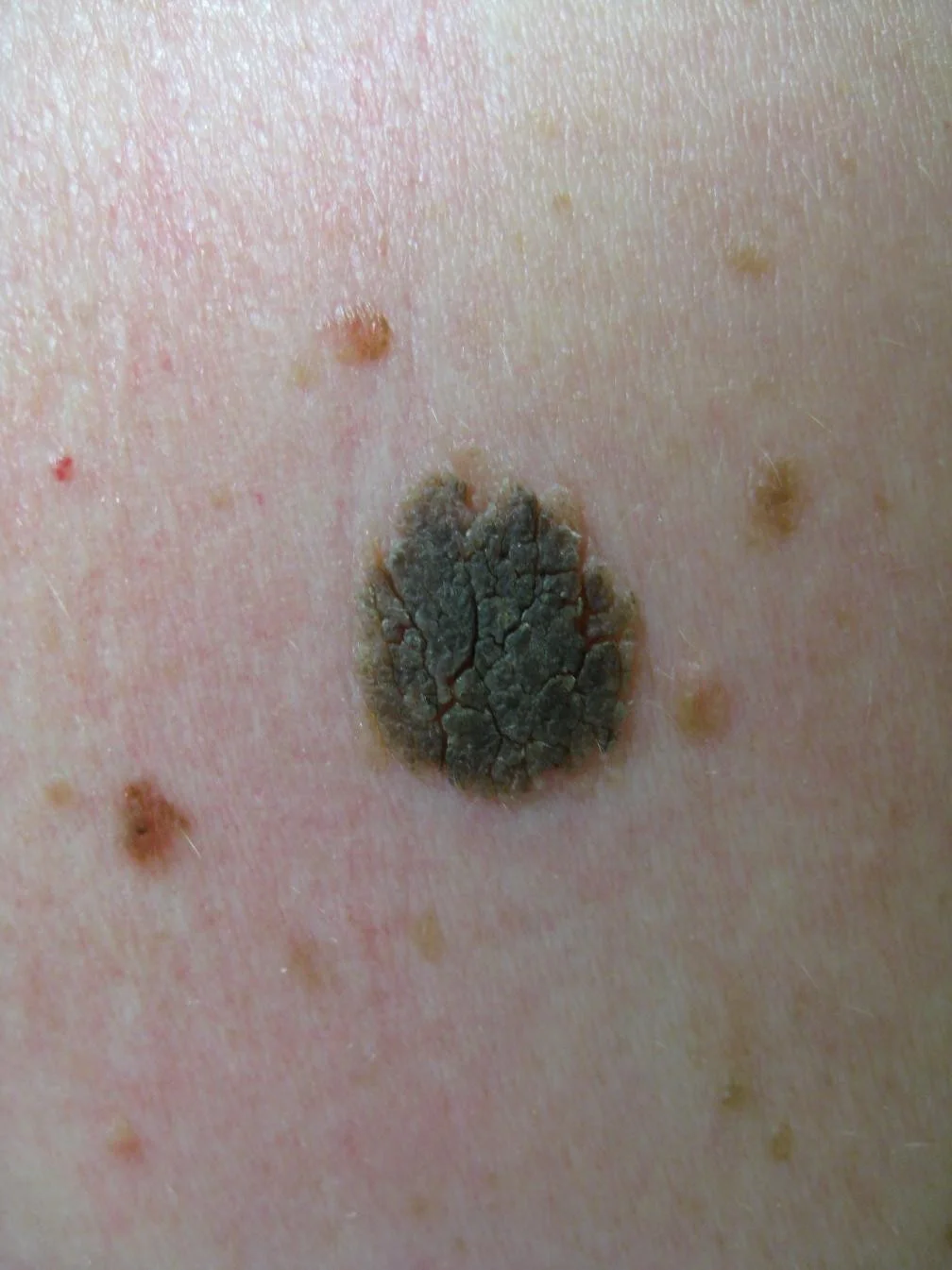
Color is variable (black, tan, flesh colored, pink, and blue) Texture can vary from velvety to verrucous (wart-like)…
Velvety, dark brown
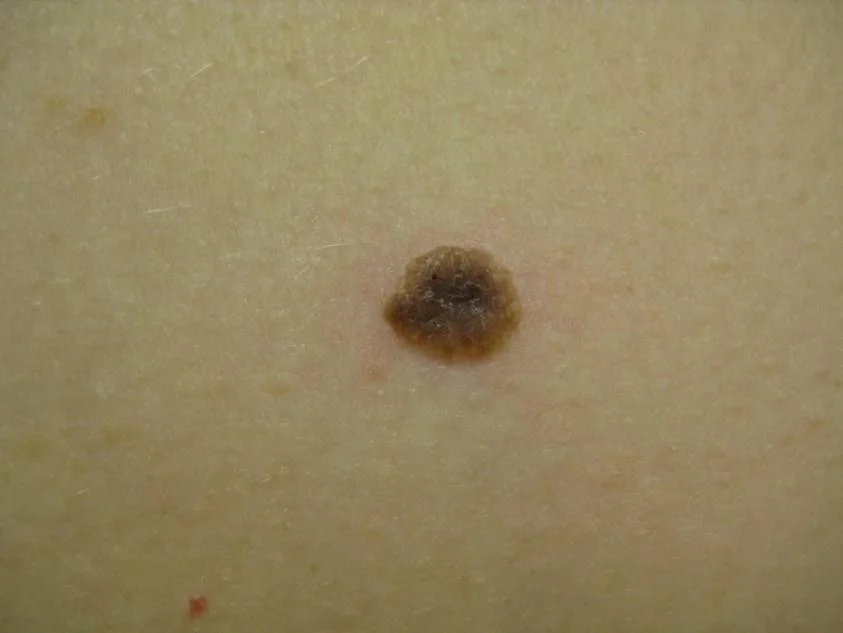
Light tan or almost skin colored
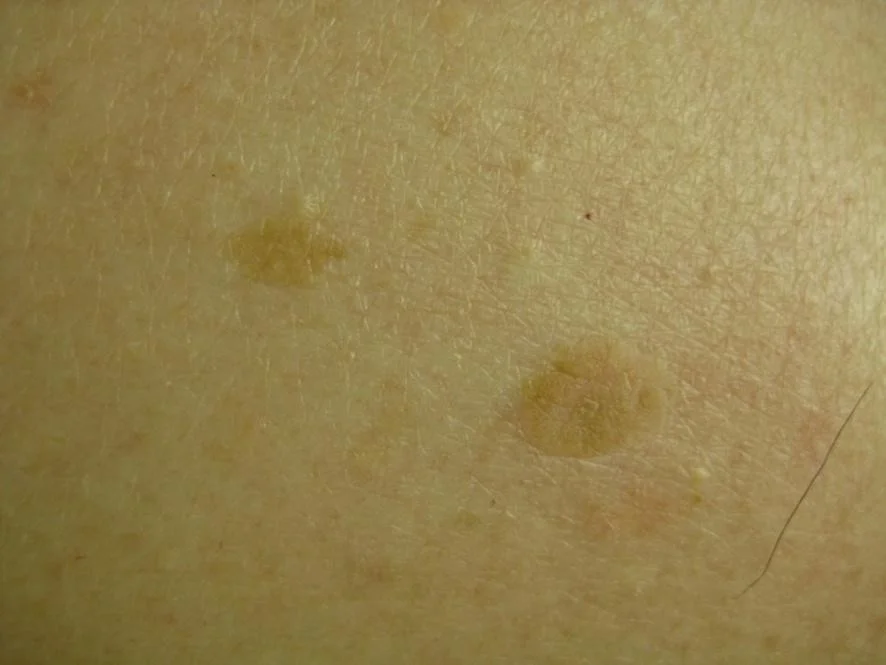
Verrucous, tan

Often multiple and can be extensive
SKs usually begin to appear during and after the fourth decade and continue to arise throughout life
Contrast this with nevi, which typically appear in the first three decades of life
A new nevus at age 50 should raise suspicion of melanoma.
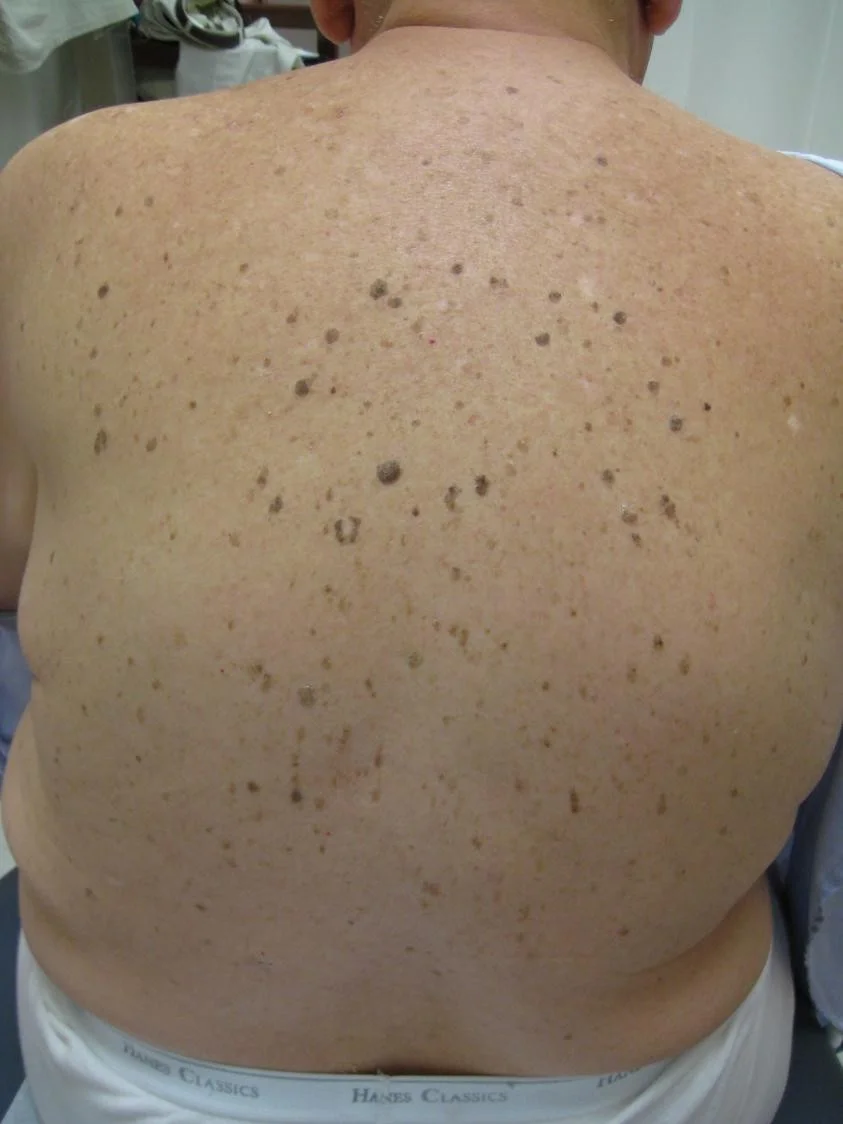 if patient develops this with multiple SKs on back in short amount period could be malignancy from GIT - also if man is young and these appeared
if patient develops this with multiple SKs on back in short amount period could be malignancy from GIT - also if man is young and these appeared
SKs are superficial epidermal growths.
They have a stuck-on quality, like a piece of wax pressed onto the skin.
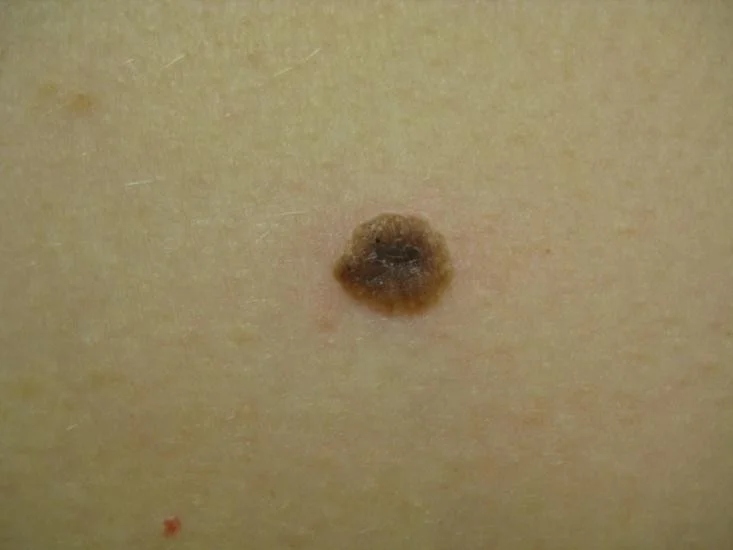

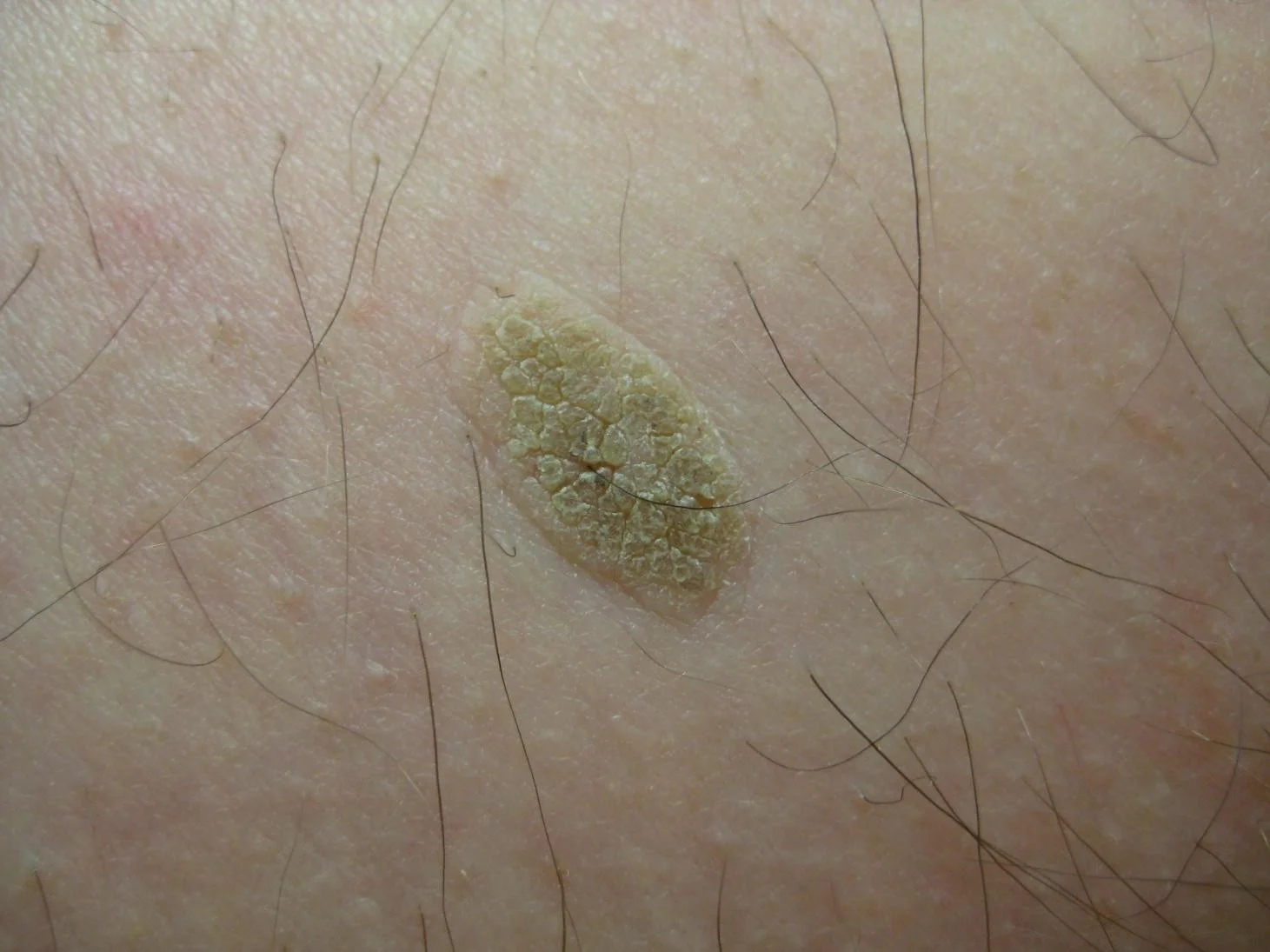
How to tell if a lesion is a seborrheic keratosis?
If you are in doubt of the diagnosis, try gently picking or scratching the lesion.
It may crumble, flake, or lift off, revealing that superficial waxy character.
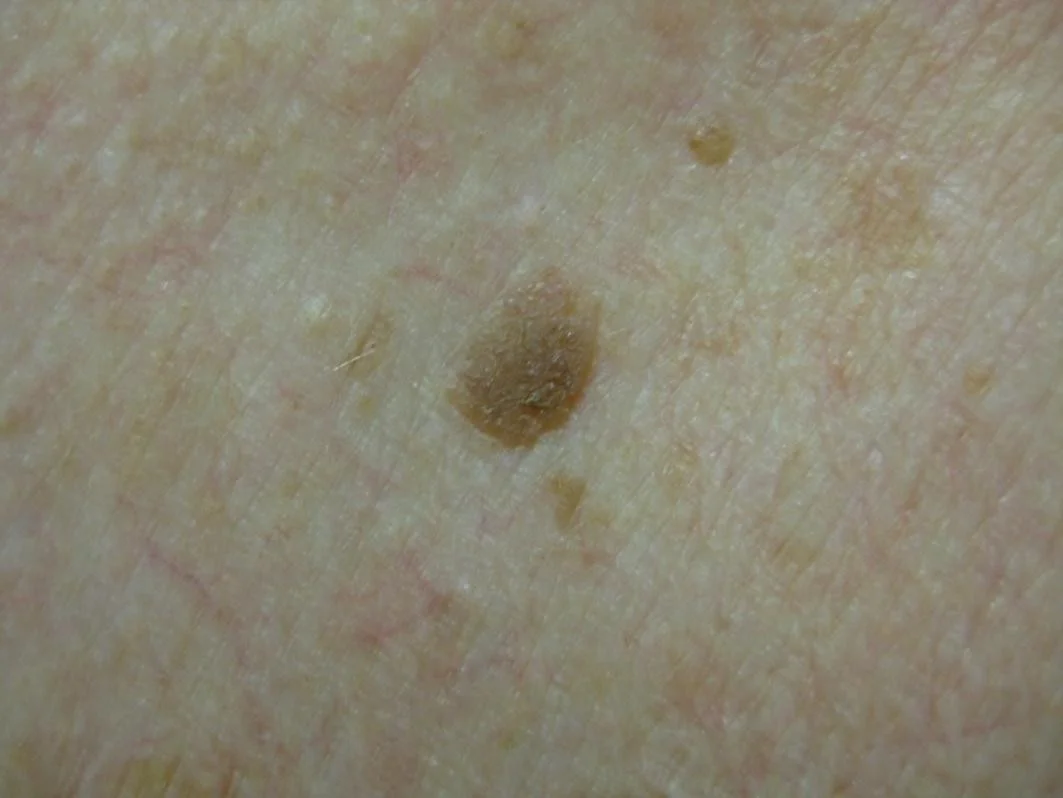
-⇒
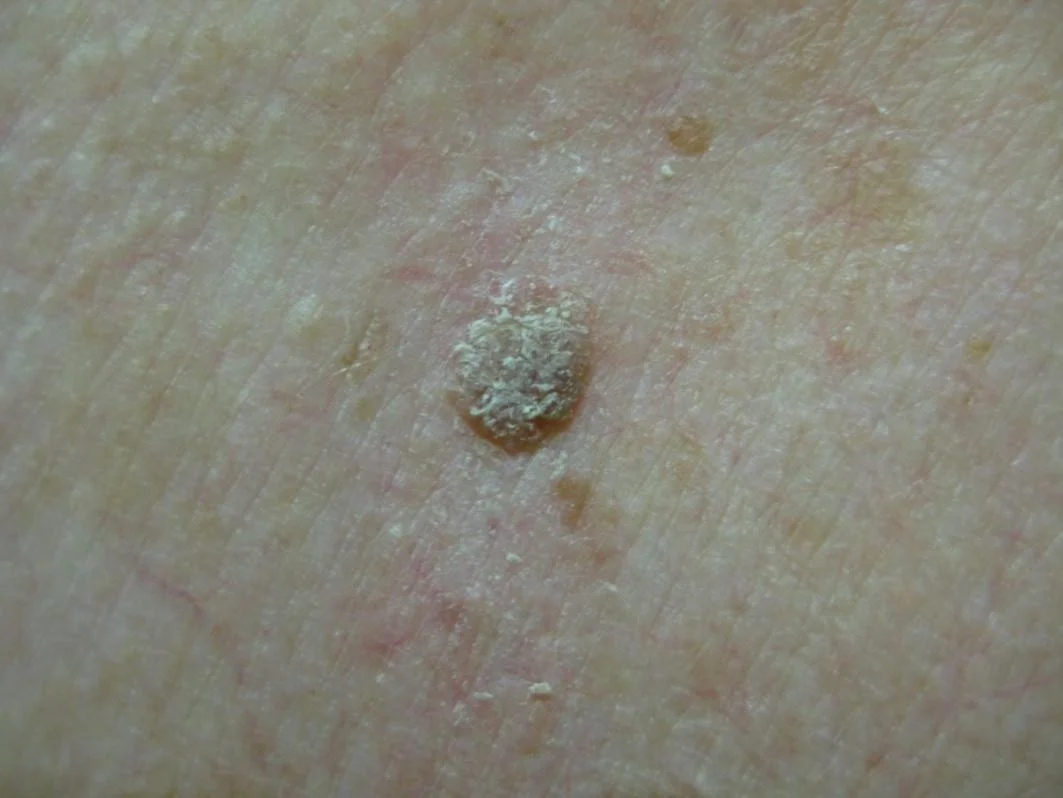
Dermoscopy
How can I tell if a lesion is a seborrheic keratosis?
Use dermoscopy to look for keratin pseudocysts
These are small white spots commonly found in seborrheic keratoses
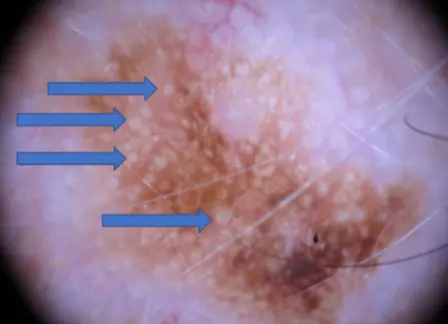
Treatment of seborrheic keratoses
Though harmless, SKs can occasionally become irritated or can be cosmetically bothersome
When necessary, SKs may be treated with curettage, cryotherapy, electrodessication and shave removal
If picked off or curetted, SKs will leave a pink moist base with minimal bleeding
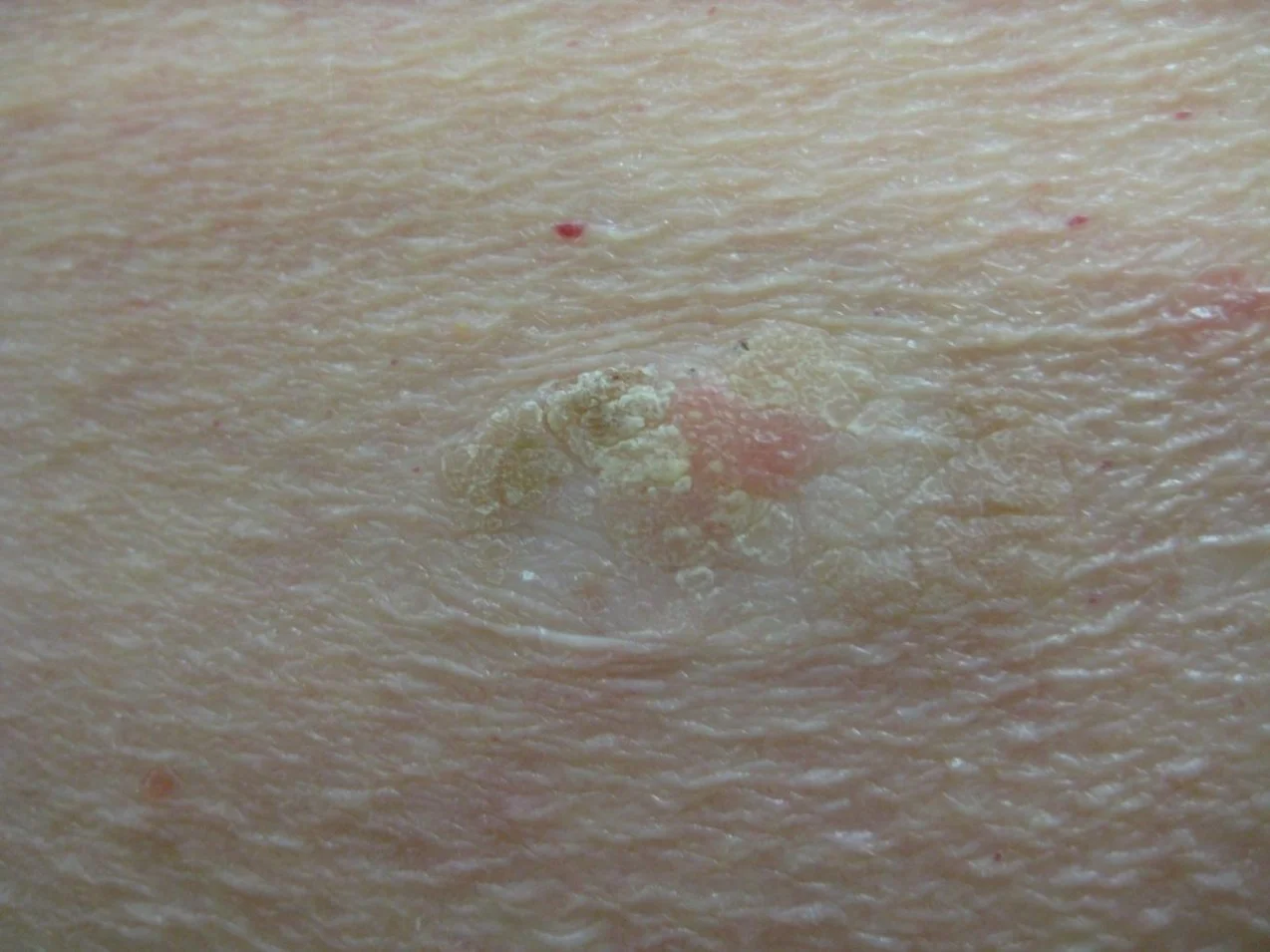 This SK has been partially picked off
This SK has been partially picked off